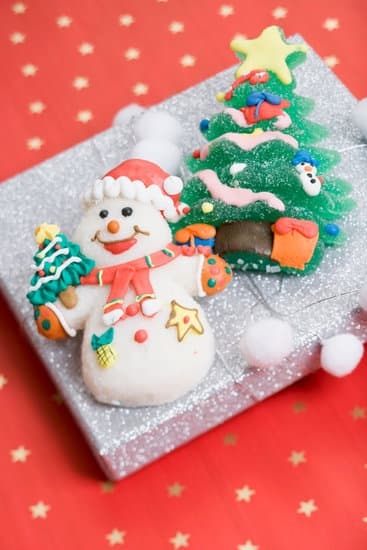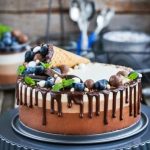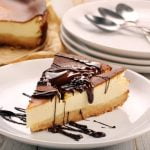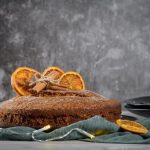What is piping gel used for in cake decorating? Piping gel is a versatile tool that plays a crucial role in creating stunning cake designs. This clear, edible ingredient serves multiple purposes, from adding shine to attaching decorations. In this article, we will delve into the world of piping gel and explore its various uses, benefits, and DIY recipes for creating this essential element.
Piping gel is a clear, viscous substance made primarily from corn syrup, water, and gelatin. This smooth and pliable medium is commonly used by cake decorators to create intricate designs, textures, and effects on cakes. Its adhesive properties make it perfect for securing edible decorations like fondant accents or sugar flowers onto cakes with precision.
Whether you are a beginner or an experienced baker, knowing how to make piping gel at home can be a game-changer in your cake decorating endeavors. By understanding the composition and characteristics of piping gel, you can customize its consistency and color to suit your specific design needs. Stay tuned as we share a simple DIY recipe for crafting your own piping gel easily and affordably.
What Is Piping Gel
Piping gel is a versatile and essential tool in the world of cake decorating. It is a transparent, gel-like substance that is commonly used to create various decorative elements on cakes. Piping gel serves as an adhesive, a texturizing agent, and a medium for intricate designs, making it a valuable resource for bakers and decorators alike.
Composition of Piping Gel
Piping gel is typically made from simple ingredients that are readily available in most kitchens. The basic components of piping gel include water, sugar, cornstarch, and flavoring or coloring agents. These ingredients are combined and heated to create a smooth, clear gel that can be easily manipulated for decorating purposes.
Definition of Piping Gel
Piping gel is essentially a thickened, translucent mixture that can be piped or spread onto cakes to achieve different effects. Its slightly sticky texture makes it ideal for attaching edible decorations such as fondant shapes, wafer paper flowers, or even fresh fruit slices. In addition to serving as an adhesive, piping gel can also be tinted with food coloring to create vibrant designs or used as a base for edible paint.
Overall, understanding what piping gel is and how it is composed opens up endless possibilities for creative cake decorating. Whether you are looking to add intricate details to your creations or simply need a reliable medium for securing decorations, piping gel is a must-have tool in every decorator’s arsenal.
How to Make Piping Gel at Home
Piping gel is a versatile ingredient used in cake decorating that can be easily made at home with just a few simple ingredients. This clear, jelly-like substance is commonly used in various techniques to enhance the appearance of cakes and pastries. One of the main advantages of making piping gel at home is that it allows decorators to customize the consistency and color according to their specific needs.
To make piping gel at home, you will need sugar, water, cornstarch, and flavoring or coloring if desired. Start by combining sugar and water in a saucepan over medium heat, stirring until the sugar dissolves. In a separate bowl, mix cornstarch with a small amount of water to create a slurry.
Add the cornstarch mixture to the sugar syrup while stirring continuously until it thickens and becomes clear. Finally, remove the mixture from heat and let it cool before adding flavoring or coloring.
Homemade piping gel can be stored in an airtight container in the refrigerator for up to two weeks, making it a convenient option for decorators who need ready access to this essential ingredient. By making piping gel at home, decorators can have full control over the quality of their cake designs without having to rely on store-bought options. Experimenting with different flavors and colors can also add an extra creative touch to your cake decorating projects using piping gel.
Various Uses of Piping Gel in Cake Decorating
Piping gel is a versatile tool in the world of cake decorating, offering a range of uses that can elevate your creations to the next level. From creating intricate textures to securely attaching decorations, piping gel is a must-have for any baker looking to add dimension and creativity to their cakes. Whether you are a seasoned professional or just starting out, understanding the various uses of piping gel can open up a world of possibilities for your designs.
Here are some key ways in which piping gel can be used in cake decorating:
- Creating Textures: Piping gel can be used to add texture to your cakes, giving them a unique and visually appealing look. By using different piping tips and techniques, you can create intricate patterns and designs that will make your cakes stand out.
- Attaching Decorations: Piping gel acts as an edible adhesive, allowing you to securely attach decorations such as fondant pieces, edible pearls, and even fresh flowers to your cakes. This ensures that your decorations stay in place and add a professional finish to your creations.
- Adding Shine: Piping gel has a glossy finish when dry, making it perfect for adding shine to certain areas of your cakes. Whether you want to highlight specific details or create a shiny glaze effect, piping gel can help you achieve the desired look.
By incorporating piping gel into your cake decorating toolkit, you can explore endless creative possibilities and take your designs to new heights. Experimenting with different techniques and applications of piping gel can lead to stunning results that will impress both yourself and others.
Piping Gel vs Other Cake Decorating Mediums
When it comes to cake decorating, there are various mediums available to help bring your creative vision to life. Piping gel is one of the popular choices among decorators due to its versatility and unique uses. In this section, we will compare piping gel with other common cake decorating mediums to understand its advantages and differences.
Piping Gel vs Fondant
Fondant is a widely used medium in cake decorating known for its smooth finish and ability to create intricate designs. While fondant is great for covering cakes and creating detailed decorations, piping gel offers a different set of benefits. Piping gel is transparent and can be used as an adhesive to attach decorations onto cakes seamlessly. It also allows for creating textures and adding shine to your designs in a way that fondant cannot.
Piping Gel vs Royal Icing
Royal icing is another popular choice for decorating cakes, especially when it comes to intricate piping work and creating 3D decorations. However, piping gel has its advantages over royal icing as well. Piping gel remains pliable even after drying, allowing for flexibility in design placement and adjustments. It is also more forgiving when it comes to mistakes, as you can easily wipe off or adjust decorations without damaging the base layer.
Piping Gel vs Buttercream
Buttercream frosting is a classic choice for cake decorating due to its creamy texture and delicious taste. While buttercream is great for creating smooth finishes and decorative borders, piping gel offers a clear, glossy finish that can enhance the overall appearance of your cakes. Piping gel can be used in conjunction with buttercream to add dimensions and accents that stand out.
Tips for Using Piping Gel Effectively
Piping gel is a versatile tool in cake decorating that can help achieve various textures and effects on cakes. From creating intricate designs to attaching decorations, piping gel offers decorators a range of possibilities. Here are some tips for using piping gel effectively in your cake decorating projects:
- Choose the right consistency: The consistency of piping gel plays a crucial role in its application. For fine details and writing, a thinner consistency is ideal, while a thicker consistency works best for attaching heavier decorations. Adjust the thickness by adding small amounts of water or powdered sugar until you reach the desired texture.
- Use different tips and techniques: Experiment with different piping tips to create various designs with piping gel. Fine tips are perfect for delicate details, while star or round tips can be used to make borders or fillings. Additionally, try techniques like dragging, stippling, or marbling to add dimension and interest to your cakes.
- Practice on parchment paper: Before applying piping gel directly onto your cake, practice your designs on parchment paper. This will help you perfect your technique and get comfortable with using the piping gel before working on the actual cake. Plus, you can easily lift off any mistakes and start over without damaging your cake.
These tips will help you master the art of using piping gel in cake decorating and unleash your creativity in designing beautiful confections. Whether you’re a beginner or an experienced decorator, incorporating piping gel into your repertoire can elevate your cakes to new heights of artistry and style. What is piping gel used for in cake decorating? With these tricks and techniques, you’ll soon discover endless possibilities for enhancing your creations with this versatile medium.
Piping Gel Troubleshooting
Piping gel is a versatile tool in cake decorating, but like any medium, it can sometimes present challenges. Understanding common problems that may arise when working with piping gel and knowing how to troubleshoot them can make a significant difference in the final outcome of your cake design. Here are some common issues you might encounter when using piping gel and ways to address them.
One common problem with piping gel is air bubbles forming in the mixture. These air bubbles can create an uneven finish when applying the gel to your cake or decorations. To prevent this issue, try tapping the container of piping gel on a flat surface before use to release any trapped air. Additionally, stirring the piping gel gently rather than vigorously can help minimize the formation of air bubbles.
Another issue cake decorators may face is piping gel becoming too runny or too thick for their intended use. If your piping gel is too thin, you can thicken it by adding a small amount of powdered sugar and mixing well until you reach the desired consistency. On the other hand, if your piping gel is too thick, try warming it slightly in the microwave for a few seconds to help soften it before use.
| Common Problems | Solutions |
|---|---|
| Air Bubbles | Tapping container on flat surface before use |
| Consistency Issues | Add powdered sugar to thicken or warm in microwave to soften |
Lastly, another challenge that decorators may encounter is difficulty in achieving vibrant colors with piping gel. If you find that your colored piping gel appears dull or transparent on your cakes, consider using concentrated food coloring gels or powders instead of liquid food coloring. These concentrated options will provide more intense hues without altering the consistency of your piping gel.
By addressing these common problems with piping gel effectively, you can enhance your cake decorating skills and achieve smoother and more professional-looking results in your designs. Experimenting with different techniques and troubleshooting methods will ultimately lead to a better understanding of how to work with piping gel successfully in various cake decorating projects.
Creative Cake Decorating Ideas Using Piping Gel
Piping gel is a versatile tool in cake decorating that offers endless creative possibilities. When it comes to designing cakes, piping gel can be used in various ways to add texture, color, and depth to your creations. Whether you are a beginner or an experienced baker, incorporating piping gel into your decorating repertoire can elevate your cakes to new heights.
One popular way to use piping gel in cake decorating is creating stunning water-themed cakes. By tinting the gel with blue food coloring and using a piping bag, you can achieve realistic water effects on your cake designs. Whether you are creating a beach-themed cake with crashing waves or a serene lake scene, piping gel can help bring your vision to life.
Another innovative way to utilize piping gel is in creating vibrant stained glass effects on cakes. By mixing different colors of piping gel and applying them in thin layers, you can mimic the look of stained glass windows on your cakes. This technique is perfect for adding a pop of color and whimsy to birthday cakes, wedding cakes, or any celebration where you want to make a statement.
| Piping Gel Cake Idea | Description |
|---|---|
| Underwater Scene Cake | Create a beautiful ocean-themed cake using blue-tinted piping gel for realistic water effects. |
| Stained Glass Cake Design | Add vibrant colors and intricate patterns to your cake by using piping gel for stained glass effects. |
Lastly, consider using piping gel to create delicate floral designs on your cakes. By mixing edible flower petals or food coloring with the gel, you can pipe intricate flowers, leaves, and vines directly onto your cakes. This technique adds a touch of elegance and sophistication to any cake design, making it perfect for weddings, anniversaries, or other special occasions when you want to impress your guests.
Overall, the possibilities are truly endless when it comes to creative cake decorating ideas using piping gel. Experiment with different techniques, colors, and textures to discover how this versatile medium can take your cake designs from ordinary to extraordinary. Let your imagination run wild and have fun exploring the artistic potential of piping gel in your next baking project.
Conclusion
In conclusion, piping gel is a versatile and indispensable tool in the world of cake decorating. Its clear and pliable nature makes it perfect for creating various textures, attaching decorations, and adding beautiful designs to cakes. Not only does piping gel serve functional purposes, but it also allows for artistic expressions that elevate the overall look of a cake.
Whether you choose to make your own piping gel at home or purchase it from stores, understanding the composition and uses of this medium can greatly enhance your cake decorating skills. From creating water effects on cakes to securing delicate sugar flowers, piping gel offers endless creative possibilities that are essential for both beginners and experienced bakers alike.
In essence, what is piping gel used for in cake decorating goes beyond simply being an adhesive or design element-it embodies a key ingredient that bridges imagination with execution. As you explore different techniques, experiment with new designs, and troubleshoot any issues that may arise, remember that piping gel is not just a substance but a valuable ally in bringing your cake decorating visions to life.
Frequently Asked Questions
How Do You Use Piping Gel on a Cake?
Piping gel is typically used as an adhesive for attaching decorations to a cake. It can also be used to create different effects such as writing, drawing, or even making designs on the surface of the cake. Piping gel is applied using a piping bag or a small spatula to control the amount and placement on the cake.
What Is Wilton Piping Gel Used For?
Wilton piping gel is commonly used in cake decorating for a variety of purposes. It can be used to create water effects, like waves or ripples on cakes with beach or ocean themes. Piping gel can also be colored and used to write messages or draw designs on cakes due to its transparency and smooth texture.
What Is the Difference Between Edible Glue and Piping Gel?
The main difference between edible glue and piping gel lies in their composition and uses. Edible glue is generally thicker than piping gel and is mainly used for adhering fondant pieces together or attaching small decorations onto cakes securely.
On the other hand, piping gel has a thinner consistency, making it ideal for creating intricate designs, writing, or adding shiny effects to cakes without adding extra thickness where not needed.

Welcome to our cake decorating blog! My name is Destiny Flores, and I am the proud owner of a cake decorating business named Cake Karma. Our mission is to provide delicious, beautiful cakes for all occasions. We specialize in creating custom cakes that are tailored specifically to each customer’s individual needs and tastes.





